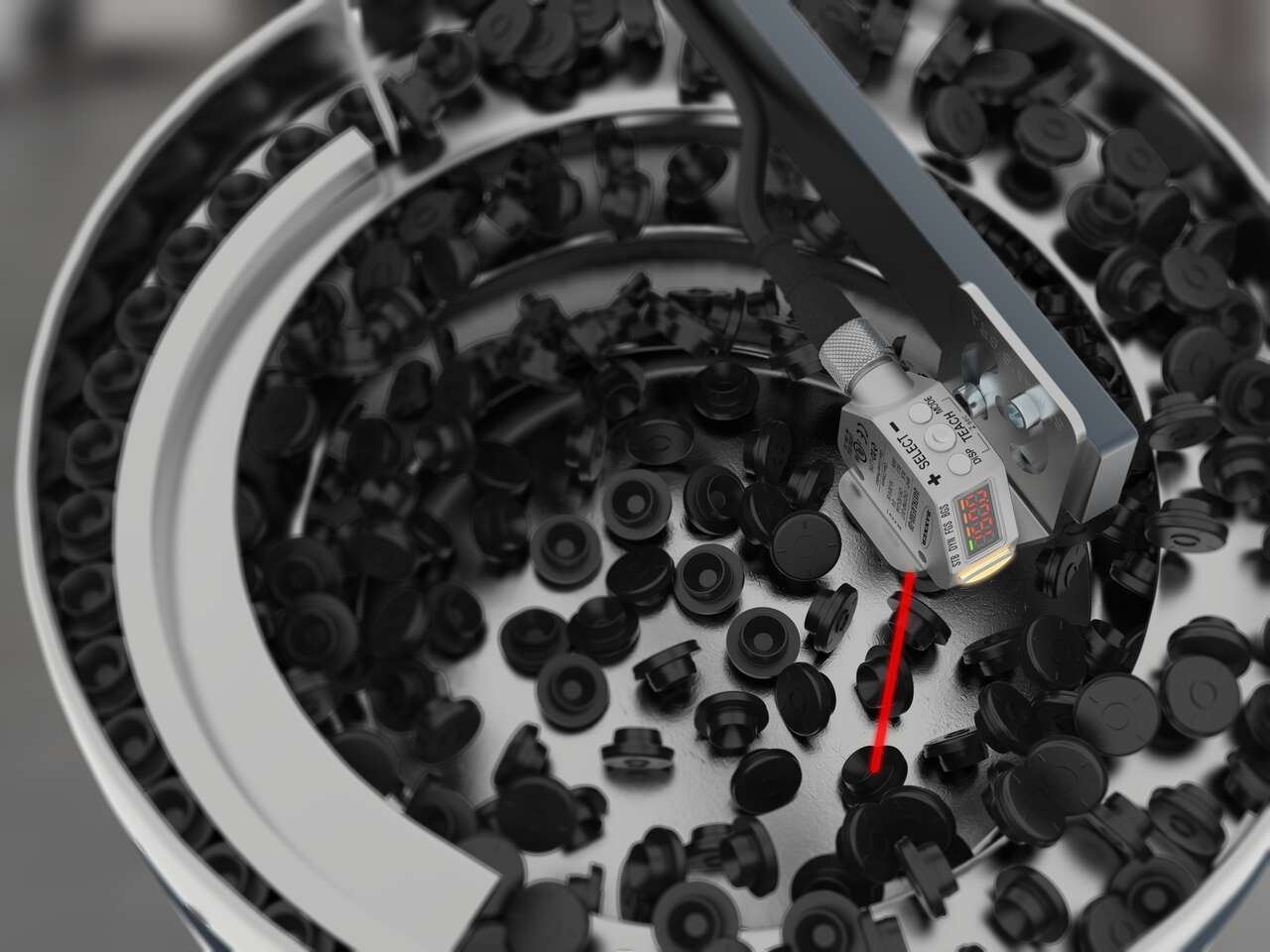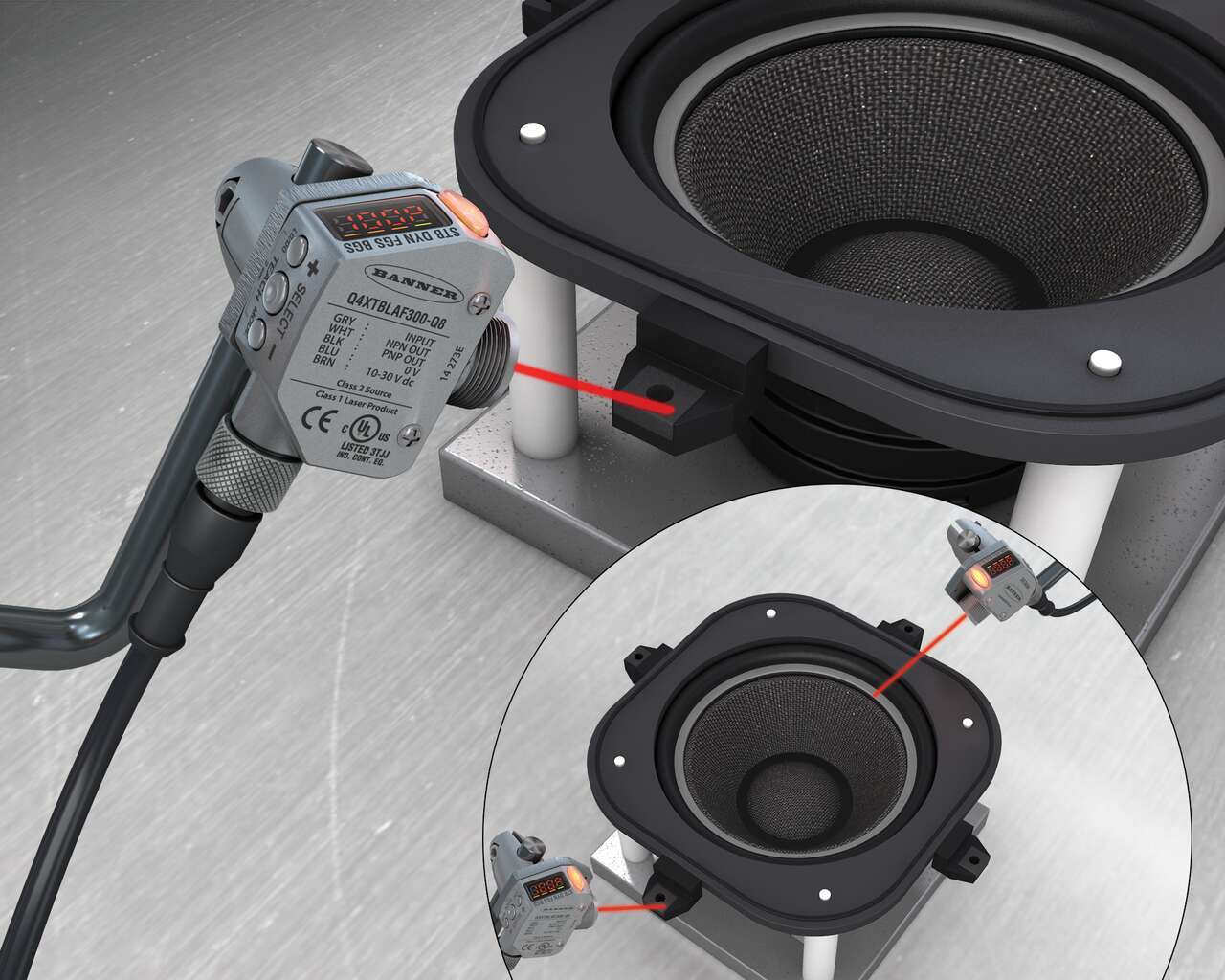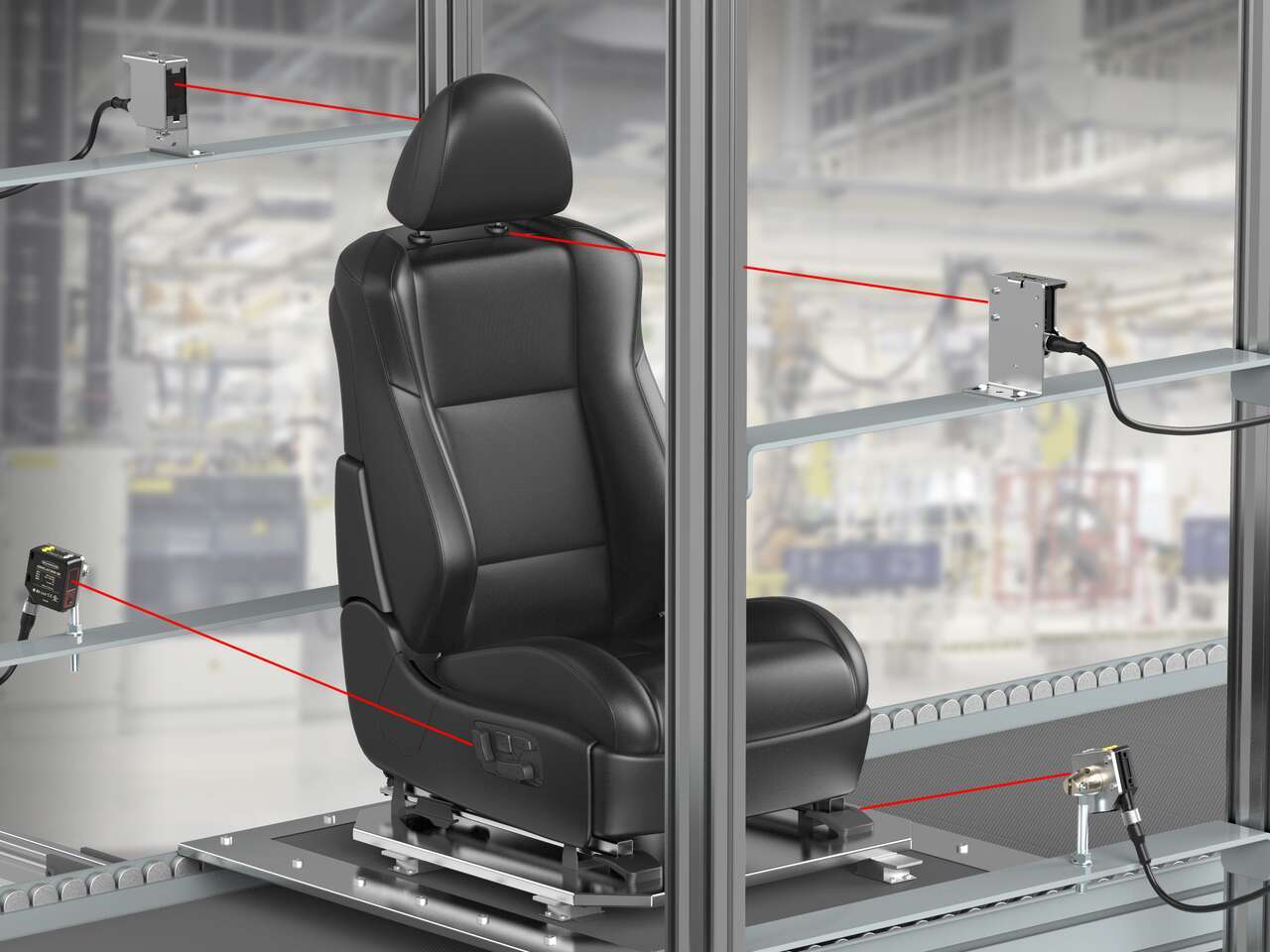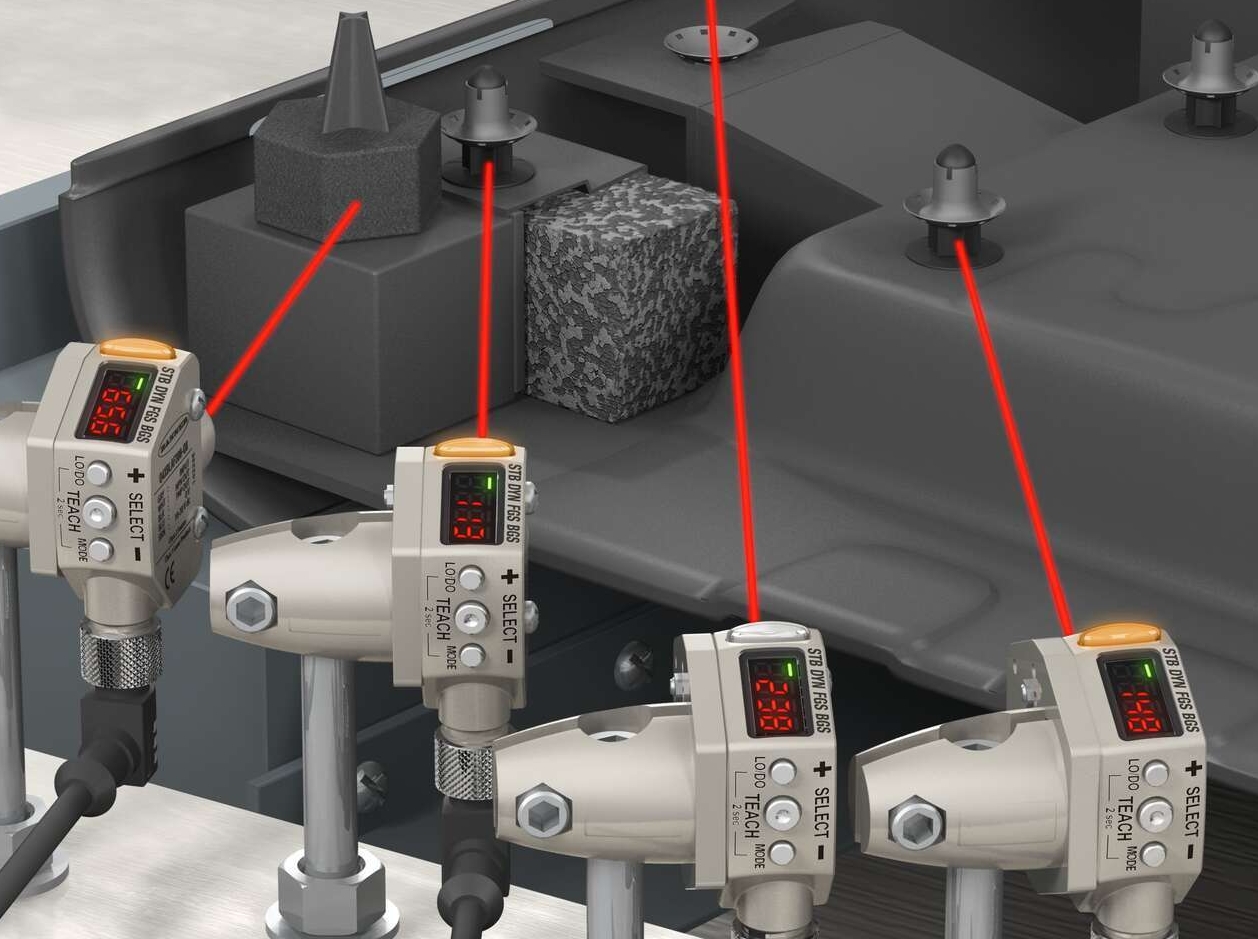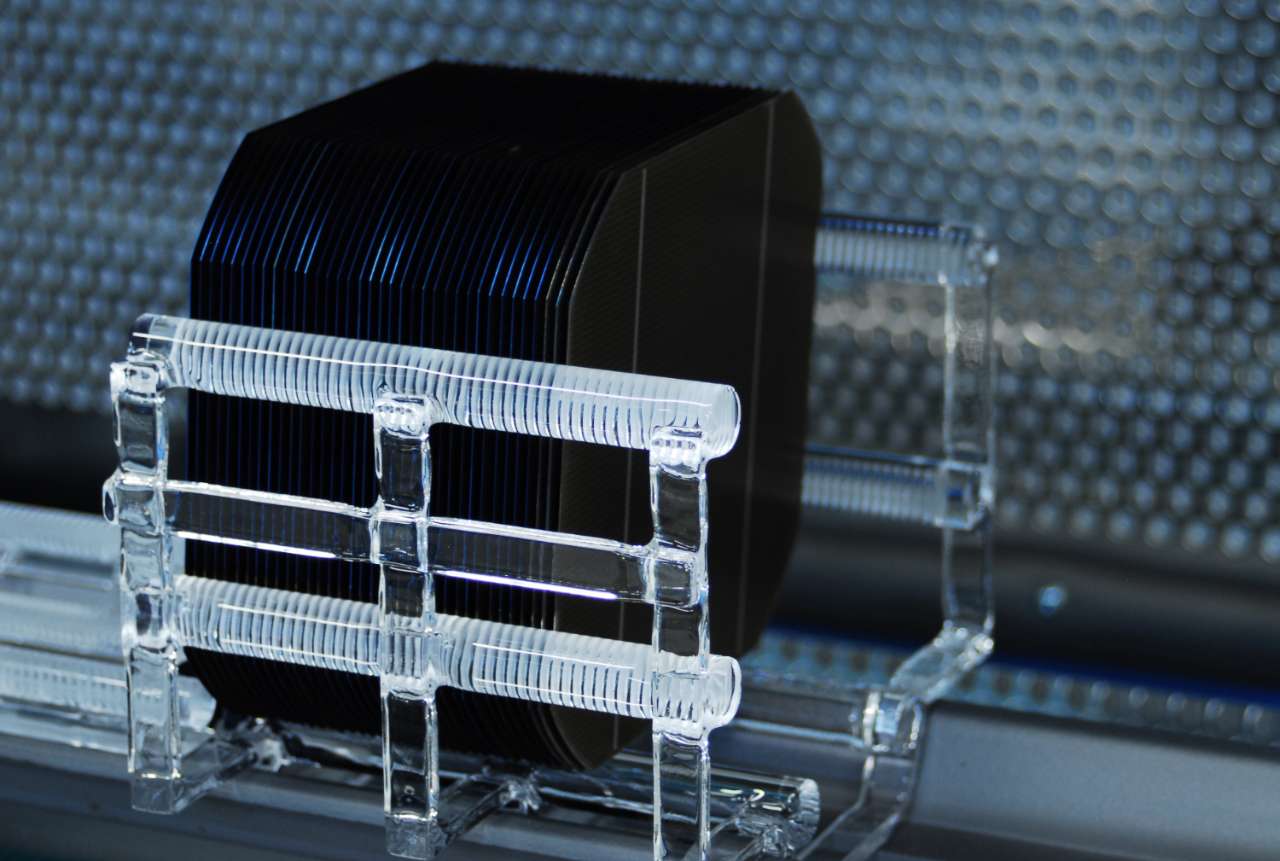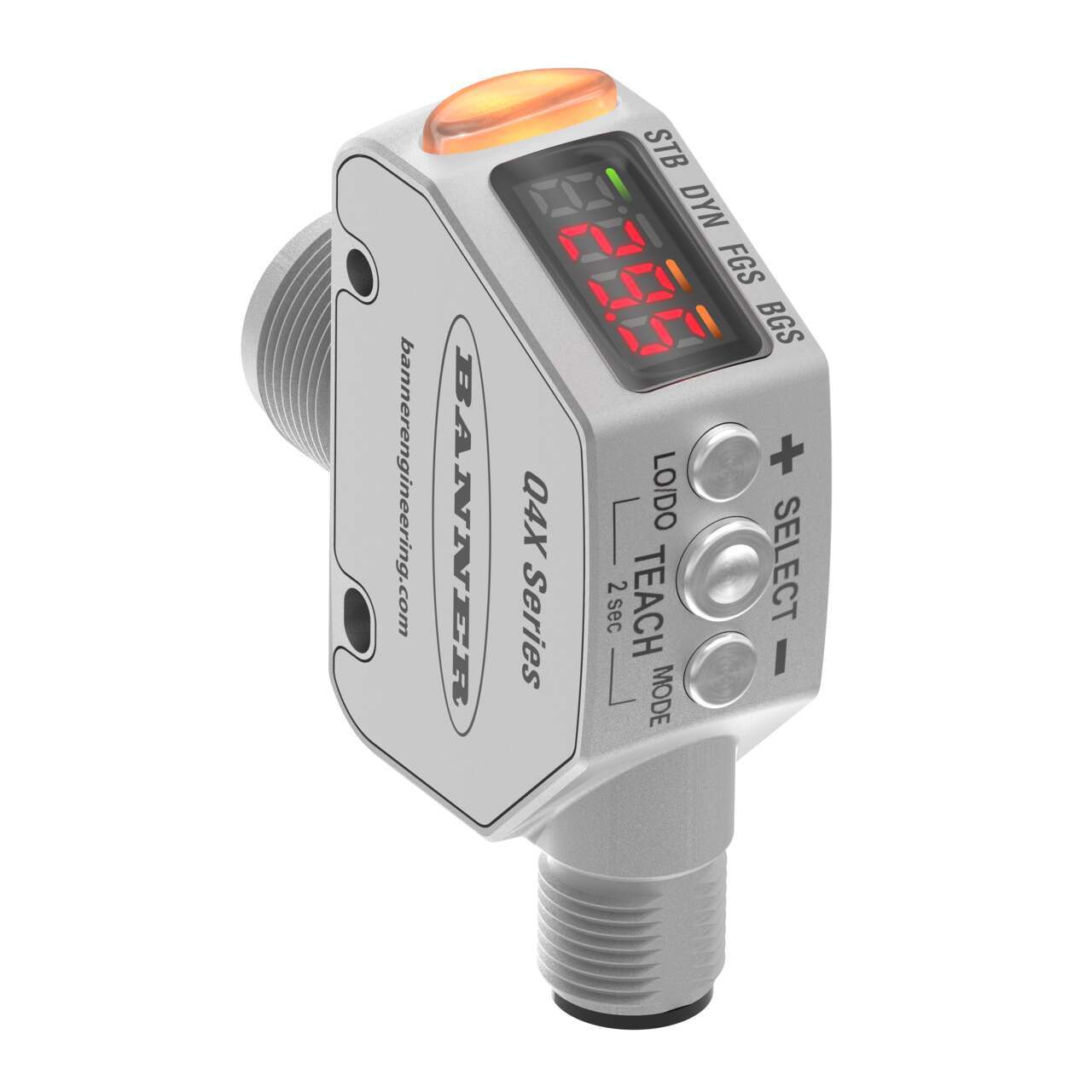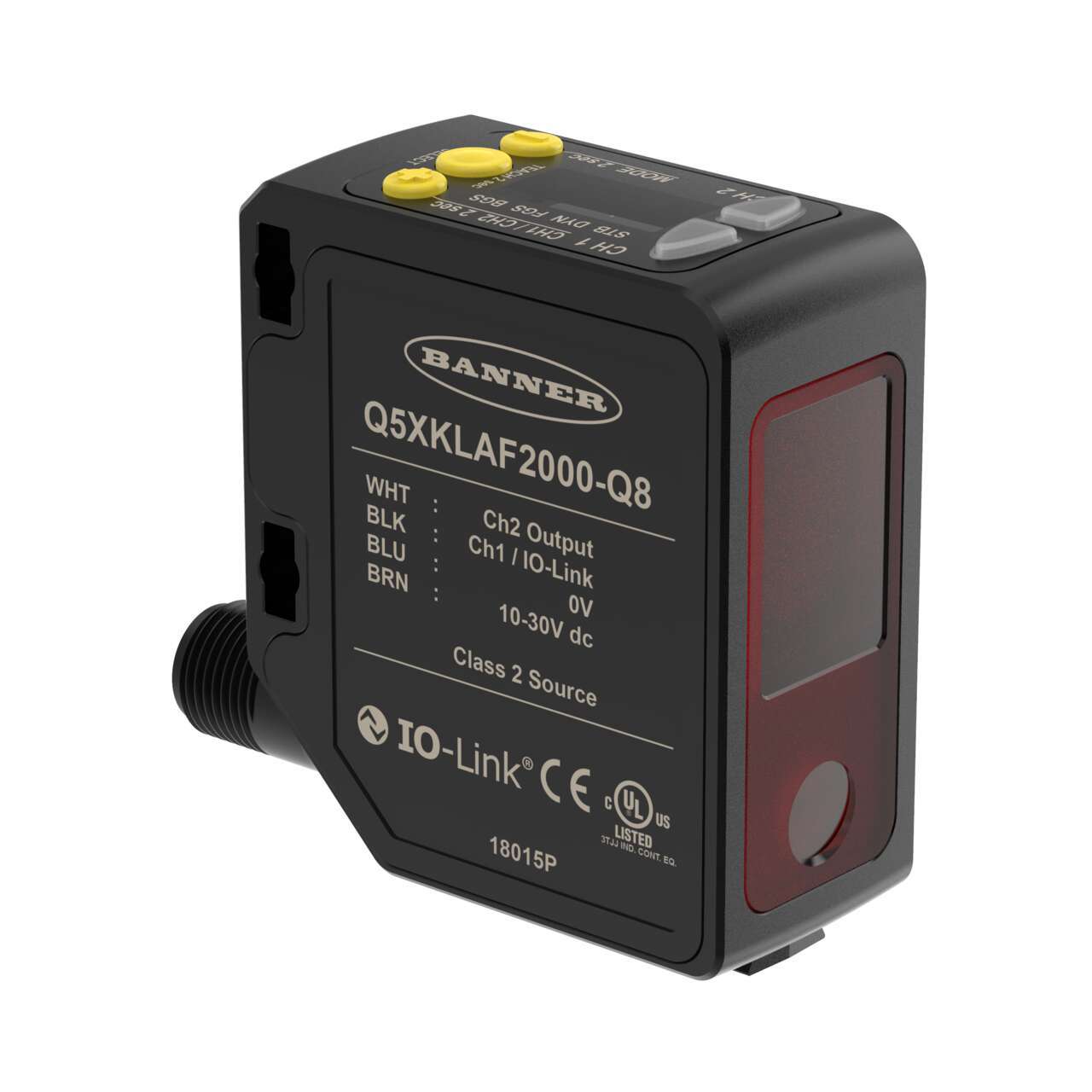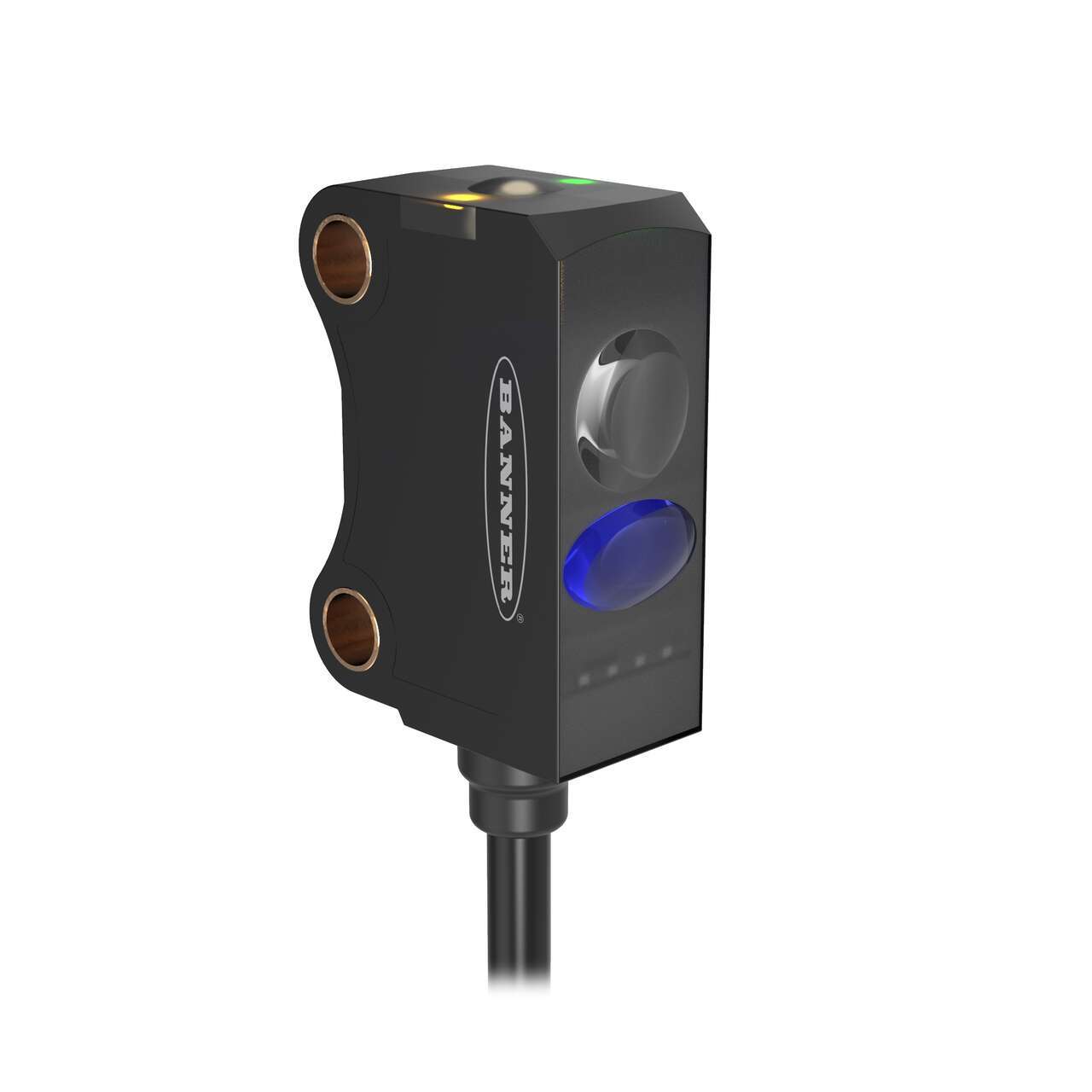Detecting Dark Objects
Dark objects, such as solar wafers or automotive parts, absorb a large amount of light, especially red light. Due to the low reflectivity of these targets, it can be challenging for LED- and laser-based sensors to reliably detect the presence of very dark objects—especially against a similarly dark background.
In spite of the challenges, there are both photoelectric and laser sensors that can reliably solve these applications. Keep reading to learn how to identify a solution for dark object detection.
There are several options for detecting dark objects. A through-beam or retro-reflective photoelectric sensor is an obvious choice since the sensor can easily detect when a dark object passes between the emitter and reciever unit, or when the beam of light between the emitter and a reflector is interrupted. However, in many applications, mounting devices on both sides of the application is impractical, if not impossible.
In these cases, a diffuse sensor (emitter and receiver in the same housing) is required. However, diffuse sensors rely on the target to act as a reflector, and targets must return enough light back to the sensor to verify the object's presence. If a target aborbs the majority of the light, as in the case of dark objects, the sensor may fail to reliably detect the target. To solve these challenges, a sensor with high excess gain, or blue light instead of red, can help ensure reliable detection.
In many of these applications, not only must the sensor detect the dark object, but it must do so against an equally dark background (for example, detecting dark parts on a dark auto body panel). The lack of contrast between target and background is also challenging for many photoelectric sensors to detect. For these applications, a distance-based laser sensor is a must. Keep reading to learn why.
Excess gain is an important metric for any application, but it is especially important when detecting dark objects. Excess gain is a measure of the minumum light energy needed for reliable sensor operation. A high excess gain helps the sensor overcome a weaker signal reflected by a dark object.
The amount of excess gain you need, over and above what you might need for a "typical" target, will depend on how dark your target is as well as the environment of your application. Pristine environments with little dust will require less excess gain than a dirty environment with debris that can cloud the sensor lens and further reduce signal strength.
Fortunately, determining the amount of gain you need doesn't have to be a manual process. Smart sensors can recognize if very little light is returning to the receiver and automatically adjust exposure settings for additional gain and a stronger signal.
Sensors that rely solely on contrast will struggle to detect very dark objects against a similarly dark background; however, these applications are common, especially in the automotive industry. For example, in the application pictured to the right, verifying that foam and other components are present on automotive door panels is extremely important. If any part is missing, the quality of the final door assembly is adversely affected.
Since door panels are often dark colors such as black or gray, and the foam used to eliminate rattles and provide stiffness is generally black, it can be difficult for standard sensors to differentiate between foam presence and absence due to poor contrast. A laser measurement sensor can reliably detect these parts by detecting changes in distance instead of color.
Some targets are designed specifically to absorb red light. For example, solar wafers are designed to absorb as much sunlight as possible and are covered in anti-reflective coating. This makes solar wafers very difficult for traditional photoelectric sensors to detect.
In these applications, a photoelectric sensor with a blue LED light can be a cost-effective solution. Blue light is not absorbed by dark objects to the same extent as red light. Since more light is remitted back to the sensor, a sensor with blue light will be able to detect extremely dark objects with greater reliability.
Laser Distance Sensor, 25-610 mm
I sensori laser di distanza, robusti e versatili, offrono prestazioni eccellenti e sono in grado di rilevare a distanza variazioni inferiori al millimetro.
- Disponibili nei modelli digitale, analogico (da 0 a 10 V o da 4 a 20 mA), oggetti trasparenti e IO-Link
- Campo di misura affidabile da 25 mm a 610 mm
- Rileva bersagli in un'ampia varietà di colori, materiali e superfici, in base alla distanza
- Con la doppia modalità TEACH (intensità + distanza), è l'ideale per applicazioni di verifica errori e consente il rilevamento di oggetti trasparenti senza catarifrangenti
- Robusta custodia con grado di protezione IP69K e acciaio inossidabile con approvazione FDA
Laser Distance Sensor, 9.5 cm - 2 m Range
Il laser di soppressione dello sfondo Q5X è un sensore potente con funzionalità di risoluzione dei problemi, racchiuso in un dispositivo conveniente con custodia rettangolare in linea con gli standard del settore.
- La portata va da 9,5 cm a 2 m
- L'eccesso di guadagno eccezionalmente alto permette al sensore di rilevare in modo affidabile gli oggetti più scuri (bersagli neri con riflettanza
- Rilevamento affidabile di bersagli neri su sfondo nero, bersagli neri su sfondo in metallo lucido, oggetti riflettenti e trasparenti, imballaggi multicolori e bersagli di tutti i colori
- La modalità DUAL TEACH consente la misurazione contemporanea di distanza e intensità luminosa, per risolvere le applicazioni più complesse
Photoelectric Sensor with Blue LED
- Sensore miniaturizzato per l'installazione in spazi ristretti
- Disponibile con luce laser rossa e brillante, per uno spot preciso che consente il rilevamento di oggetti di piccole dimensioni
- I modelli con luce LED blu sono in grado di rilevare in modo affidabile bersagli difficili, quali oggetti riflettenti e trasparenti, senza richiedere un catarifrangente
- Elevata frequenza di commutazione per il rilevamento anche in processi ad alta velocità
- Facilità d'uso con pulsante elettronico o ingresso remoto, per un rilevamento affidabile e preciso
- Realizzato nella versione con luce laser o LED a luce rossa o blu, per adattare il raggio di rilevamento all'applicazione
- Custodia robusta in plastica rinforzata con fibre di vetro
- Uscita NPN o PNP, a seconda del modello
